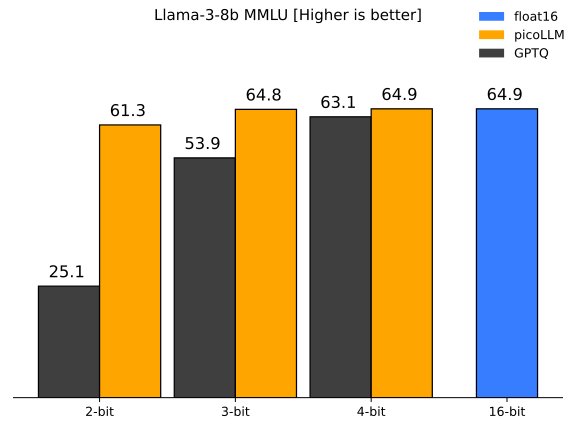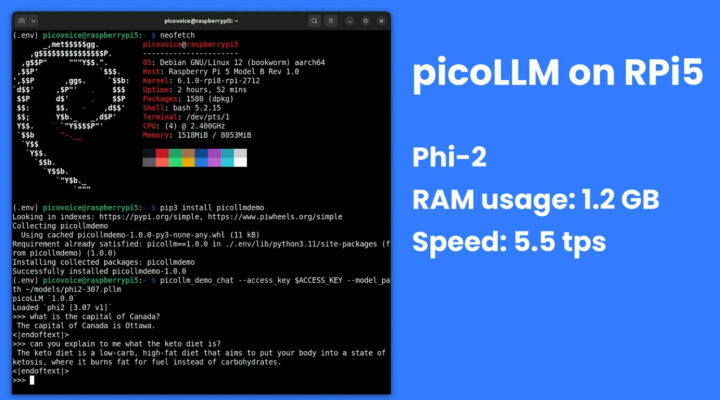Large Language Models (LLMs) can run locally on mini PCs or single board computers like the Raspberry Pi 5 but with limited performance due to high memory usage and bandwidth requirements. That’s why Picovoice has developed the picoLLM Inference Engine cross-platform SDK optimized for running compressed large language models on systems running Linux (x86_64), macOS (arm64, x86_64), and Windows (x86_64), Raspberry Pi OS on Pi 5 and 4, Android and iOS mobile operating systems, as well as web browsers such as Chrome, Safari, Edge, and Firefox.
Alireza Kenarsari, Picovoice CEO, told CNX Software that “picoLLM is a joint effort of Picovoice deep learning researchers who developed the X-bit quantization algorithm and engineers who built the cross-platform LLM inference engine to bring any LLM to any device and control back to enterprises”.
The company says picoLLM delivers better accuracy than GPTQ when using Llama-3.8B MMLU (Massive Multitask Language Understanding) as a metric as shown in the diagram below with the most gain being when using 2-bit settings. The 4-bit INT result has the same MMLU score as the 16-bit float result.

You’ll find some demos, the SDK, and demos for various programming languages and platforms on GitHub. The solution is completely free for open-weight models but requires an access key that is verified by connecting to a server. After access key verification, all LLM processing is done offline and on-device.
We’ve written about Picovoice since 2020, as they offer easy-to-use voice activity detection (VAD) (Cobra), custom wake word (Porcupine), speech-to-text (Leopard and Cheetah), and voice recognition (Rhino) solutions that are fairly easy to use and work on low-end hardware such as Raspberry Pi and Arduino. The company has now combined several of those software solutions with the picoLLM implementation to create an LLM-powered voice assistant written in Python and shown to run on the Raspberry Pi 5 in the video embedded below.
Picovoice solutions are usually free for hobby projects with some limitations, and you should be able to reproduce the demo above on a Raspberry Pi 5 by following the instructions on GitHub.

Jean-Luc started CNX Software in 2010 as a part-time endeavor, before quitting his job as a software engineering manager, and starting to write daily news, and reviews full time later in 2011.
Support CNX Software! Donate via cryptocurrencies, become a Patron on Patreon, or purchase goods on Amazon or Aliexpress





